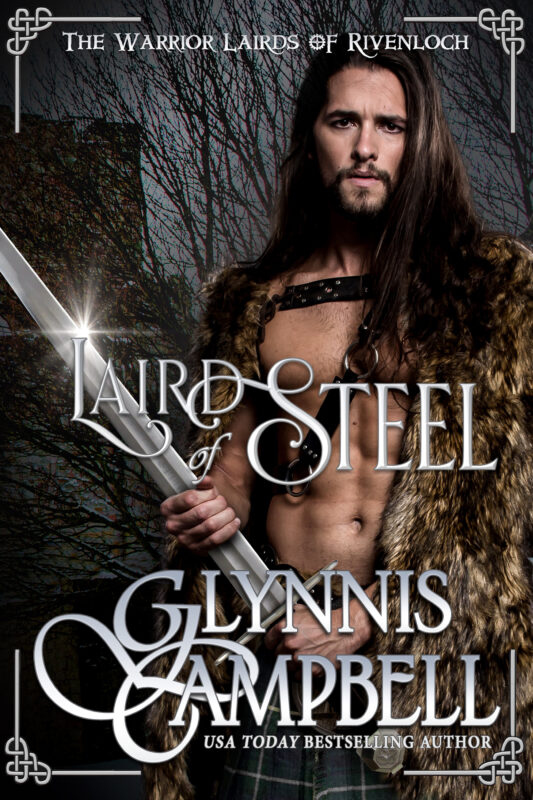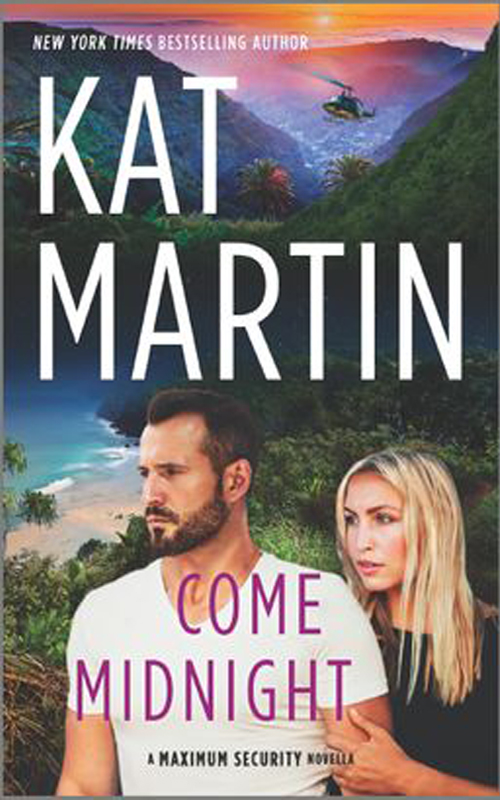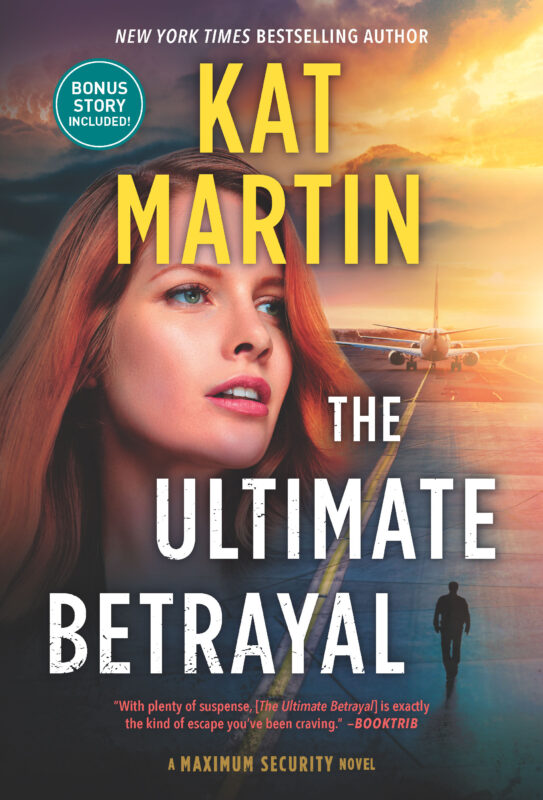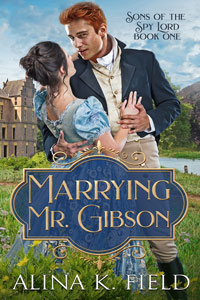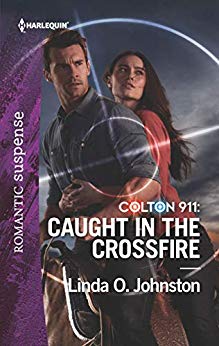A Writer’s Pursuit…
February 12, 2008 by A Slice of Orange in category Archives tagged as A Writer's PursuitOf Inspiration and Answers
Yep, I’m looking forward to reading your answers…
How many of you are able to write stories set in the area where you live? I bet there are a lot of you out there. And if you’re one of them, I just have to say…Luuuucky. 🙂
Yeah, I don’t happen to be one of those writers. That is to say, my stories tend to have more energy, more vibrance when they’re set somewhere else, such as in another state, in another country, or even in a different time period. Sure, I can write a story set in California as long as it’s a historical. But a contemporary? Well, let’s just say the thought of poking needles in my eyes almost—ALMOST–seems preferable to the amount of revising I have to do in order to make the scenes come alive for me. It’s ugly. ::shudder::
But why? Why? WHY?! I’d love to be able to put to use what I already know about a fantastic location, especially one where I’ve lived nearly my entire life, one that has so much to offer—one like…oh, say, Orange County? I mean, that only makes sense, right?
Sigh. I guess I’m just a slave to my characters. Right now, they refuse to talk to me if I force them to stay here in contemporary Southern California. LOL!
So, what about you?
1. Are you inspired by your surroundings?
2. Do you prefer to write about locations outside of where you live?
3. Do you do both?
4. Do you think I need therapy for being a slave to my characters?
Can’t wait to hear from you!
Michele
 Michele Cwiertny writes dark paranormal romance set waaaaay on the other side of the country…Seriously, nowhere near Orange County, CA (just in case her characters are reading this). To find out more about her writing, please visit www.michelecwiertny.com and her blog, Michele’s Writing Corner.
Michele Cwiertny writes dark paranormal romance set waaaaay on the other side of the country…Seriously, nowhere near Orange County, CA (just in case her characters are reading this). To find out more about her writing, please visit www.michelecwiertny.com and her blog, Michele’s Writing Corner.
Today is “Work in Your Bathrobe Day”
February 11, 2008 by A Slice of Orange in category Archives tagged as Confessions of a Podcast Goddessby Jina Bacarr
If you’re like me, you’re reading this blog in your bathrobe. We’re not alone. February 11, 2007 is the sixth annual “Doing Business in Your Bathrobe Day,†a time to celebrate the freedom of working at home. According to a press release from Webmonz.com, more than 4.5 million home business owners have waved goodbye to the pressures of the corporate rat race and have settled into a more balanced and better quality of life…working from home.
I’m one of them. I spend my workday in my bathrobe in front of my computer writing hot sex. It sure beats hitting the freeway. And my coffee never gets cold.
It’s not just we writers working at home. Kristie Tamsevicius, co-founder of Webmomz.com, a site that empowers women who have chosen to work from home, views having a home business as the ultimate life balancer. “Some people may think that living and working under the same roof creates more stress, but in fact, just the opposite is true. Working from home gives you the freedom to schedule your work around your life, rather than the other way around. That way you can create a life that you truly love.â€
I’d like to take her philosophy one step further. Many working women often have trouble fitting sex into their schedule, but I’ve discovered that writing about sex is like having foreplay eight hours a day. And after work? Doing research is part of the job. Does it get any better than this?
So take Kristie’s advice and celebrate your entrepreneurial spirit by mapping out a new business plan—one that makes the bathrobe your power suit. Or in the case of my characters, your birthday suit. They often spend the day not wearing any clothes. I, on the other hand, have no intention of giving up my bathrobe.
What are you wearing while you’re reading this?
Inquiring OCC minds want to know…
Check out my video podcast in my bathrobe:
Webmomz.com will hold a random drawing for a $50 gift certificate for a bathrobe from Victoria’s Secret, as well as for a host of other prizes.
Register online at WebMomz.com.
Best,
Jina
Jina Bacarr is the author of The Blonde Geisha , Naughty Paris, Tokyo Rendezvous, a Spice Brief, and Spies, Lies and Naked Thighs, an erotic spy thriller, March 2008. Check out my MySpace page for Breezy Malone, the heroine in my spy thriller.
“Get Caught in the Act!”
It’s Worth It
February 9, 2008 by A Slice of Orange in category Archives tagged as It's Worth ItMAKING LISTS
by Kitty Bucholtz
When I was thinking about my column this month, I couldn’t think of one single thing to write about. Some days I’m so happy with life, that niggling guilt that’s always in the back of my mind when I’m not working – well, it just goes away! And today, I couldn’t help but list all the things I’ve spent time on this week – even when I thought I should’ve been writing – that added some unexpected happiness.
Choir practice, even though I thought I was too busy to go
Talking to strangers, even when I was busy
Calling my mom, even though I was busy
Enjoying a few chapters of reading, even when I should’ve been writing
Cuddling and watching TV with my honey, even if I should’ve been working
Thanking God for future blessings, even though I can’t see them yet
Supporting a friend by walking the picket line with her, even when I’m busy
Taking a moment to enjoy the stars, even when I’m tired
The joy of telling a story, even if only to myself today
I’m sure this list isn’t complete, but you get the picture. And the thing I noticed was that my writing energy improved after each of these things! But you know, even if it hadn’t helped my writing, some things in life are just worth it.

Kitty Bucholtz writes romantic comedies because, well, she lives one! She wrote her first book in the NBC cafeteria, the second snowed in at a Reno hotel, and the third from a tiny apartment in Sydney. Even though she loves talking about, writing about, and teaching about writing, she’s pretty sure she knows at least three people who aren’t writers.
Things That Make Me Go Mmmruh . . .
February 7, 2008 by A Slice of Orange in category Archives tagged as Things That Make Me Go Mmmruhby Geralyn Ruane
Every few years or so I dust off Touch Not the Cat by Mary Stewart and reread it, just so I can get to page 227, when Bryony runs out into the moonlit orchard and – well, I won’t tell you – but it’s the best part of the story.
And I’ll bet that everyone knows the feeling I’m talking about – reading a dog-eared book or watching a favorite movie just to get to that scene that makes you go mmmruh! We don’t skip ahead to the incandescent chapter, or fast forward to the culminating scene, because without the build up, the climax is a let down. Captain Wentworth’s striding in and asking for Anne in front of everyone wouldn’t grab you by the guts and never let go without that preceding heartbreak, betrayal, belittling and loneliness.
Build-up, climax, bliss – it’s the pulse of romance . . . and sports.
I watch sports to feel the thrill when that 3-point shot at the buzzer wins the game, when that amazing catch in the end zone defies physics, when that guy nobody ever heard of knocks out an invincible champion, when that bunch of college kids ices a communist powerhouse.
A romance writing friend once commented, “Geralyn, that’s why there are highlights.â€
But come on! Who wants to read a romance that catalogs scene after scene of the heroine and her man having great sex because they are just so in love and their lives couldn’t be more perfect? Highlight reels provide no more than superficial thrills. But when you know what’s at stake in the contest, and when you sweat as you watch the fight, the pay-off is visceral. Mmmruh . . .
Romance, like sports, is an aching quest for the moment of perfect climax.
Why else was this Sunday’s Super Bowl XLII the most watched thing ever on TV, second only to the final episode of M*A*S*H? Are there so many Patriots and Giants fans out there? Maybe, but I suspect the game’s popularity was due to not just the foreplay, but more significantly, the guarantee of an explosive climax.
As Sports Illustrated so succinctly says, “The Super Bowl would be either a CORONATION or a COLOSSAL UPSET.” In one corner is a smug, undefeated, championship team who wants to make history by becoming the only NFL franchise to go 19-0 in a season. In the other corner is a scrappy wild card team who had unexpectedly beaten redoubtable play-offs rivals to become the second-worse franchise ever to make it to the Super Bowl. New York’s Plaxico Burress predicts a 23-17 Giants win. Tom Brady laughs at a press conference at the notion of his Patriots scoring a mere 17 points. Can the New York defense stop the locomotion of the New England offense? Tom Brady looms infallible – can Eli Manning, league leader in interceptions thrown during the regular season, step up?
As it turns out, Plaxico is wrong. The Giants hold the Patriots to 14 points, not 17, thanks to a defense that sacks Tom Brady 5 times and breaks up the Hail Mary. And in the last 2 minutes of the game, Patriots on top by 4, young Eli steps up. Courtesy of an offensive line that wouldn’t quit, he breaks out of a near-sack to throw to third-string receiver David Tyree who makes one of the most amazing catches in NFL history. Seriously, who catches a football with his head? A final pass to Plaxico in the end zone, and those scrappy Giants win the Super Bowl.
It was the perfect climax.

Geralyn Ruane’s new favorite numbers are 18 and 1. She co-hosts the radio show Better Times After 50 on AdviceRadio.com when she’s not drinking chocolate milk straight from the spoon or writing humorous women’s fiction. Her short story “Jane Austen Meets the New York Giants†is published in the New York Times Bestselling anthology The Right Words at the Right Time Volume 2.
Multiple Hats on the Same Day
February 6, 2008 by Linda O. Johnston in category Pets, Romance & Lots of Suspense by Linda O. Johnston tagged as Berkley Prime Crime, Linda O. Johnston, Silhouette NocturneOkay, so much for my keeping the New Year’s resolution I proposed in my last Slice of Orange blog–becoming more efficient in my writing. Where did the last month go?
It may have passed so fast for me because I was on a delightful cruise to Australia and New Zealand for almost 3 weeks. I think. I lost track of time because of crossing the International Dateline a couple of times.
The great thing was that, while traveling, I got word that I’d sold my second Silhouette Nocturne! The not quite so great thing is that the sale was on condition that I make some significant changes to that Nocturne proposal, which I really didn’t mind since that’s sometimes part of the process. The only problem was that I’m on a March 15 deadline for my 7th Kendra Ballantyne, Pet-Sitter mystery, and didn’t accomplish as much as I’d hoped on the cruise (big surprise!)–although my 2 talks on writing went well.
Fortunately, my Silhouette editor was quite accommodating. I was able to schedule a date for providing the proposal revisions several weeks after my mystery manuscript was due. But I still needed to prepare for a brainstorming telephone call with my editor that occurred soon after I got back. That meant switching writing hats from light mystery to dark paranormal romance each day during several succeeding days as I thought through the Nocturne changes yet continued to write my mystery. Not to mention going to my downtown LA law job each weekday morning. Yikes!
Well, it really wasn’t that bad. As I’ve said often before, the ability to change between genres is something I feel strongly about. My mysteries generally contain romance, and my romances contain mystery, or at least suspense. And changing from fiction writing to contract drafting isn’t much of a stretch. In any event, I met the challenge. My editor seemed to like the revised direction I proposed for the new Nocturne. And I’m making progress with the draft of my new mystery.
How about you? How many hats do you wear on one day?
Linda O. Johnston
www.LindaOJohnston.com
Linda O. Johnston is the author of 14 romance novels as well as the Kendra Ballantyne, Pet-Sitter mystery series from Berkley Prime Crime.
Affiliate Links
A Slice of Orange is an affiliate with some of the booksellers listed on this website, including Barnes & Nobel, Books A Million, iBooks, Kobo, and Smashwords. This means A Slice of Orange may earn a small advertising fee from sales made through the links used on this website. There are reminders of these affiliate links on the pages for individual books.
Search A Slice of Orange
Find a Column
Archives
Featured Books
LAIRD OF STEEL
Gellir faces the one intrepid warrior he may not be able to conquer.
More info →COME MIDNIGHT
A routine flight turns into a suspenseful race through the remote jungles of Honduras
More info →THE ULTIMATE BETRAYAL
To prove her father’s innocence, she’ll have to turn a killer's sights on herself.
More info →MARRYING MR. GIBSON
She won't be forced into marriage to a nobleman's by-blow. He won't be trapped into marriage by a father he's never known.
More info →
COLTON 911: CAUGHT IN THE CROSSFIRE
From hunting cattle rustlers
To being hunted by a killer
Newsletter
Contributing Authors
Search A Slice of Orange
Find a Column
Archives
Authors in the Bookstore
- A. E. Decker
- A. J. Scudiere
- A.J. Sidransky
- Abby Collette
- Alanna Lucus
- Albert Marrin
- Alice Duncan
- Alina K. Field
- Alison Green Myers
- Andi Lawrencovna
- Andrew C Raiford
- Angela Pryce
- Aviva Vaughn
- Barbara Ankrum
- Bethlehem Writers Group, LLC
- Carol L. Wright
- Celeste Barclay
- Christina Alexandra
- Christopher D. Ochs
- Claire Davon
- Claire Naden
- Courtnee Turner Hoyle
- Courtney Annicchiarico
- D. Lieber
- Daniel V. Meier Jr.
- Debra Dixon
- Debra H. Goldstein
- Debra Holland
- Dee Ann Palmer
- Denise M. Colby
- Diane Benefiel
- Diane Sismour
- Dianna Sinovic
- DT Krippene
- E.B. Dawson
- Emilie Dallaire
- Emily Brightwell
- Emily PW Murphy
- Fae Rowen
- Faith L. Justice
- Frances Amati
- Geralyn Corcillo
- Glynnis Campbell
- Greg Jolley
- H. O. Charles
- Jaclyn Roché
- Jacqueline Diamond
- Janet Lynn and Will Zeilinger
- Jeff Baird
- Jenna Barwin
- Jenne Kern
- Jennifer D. Bokal
- Jennifer Lyon
- Jerome W. McFadden
- Jill Piscitello
- Jina Bacarr
- Jo A. Hiestand
- Jodi Bogert
- Jolina Petersheim
- Jonathan Maberry
- Joy Allyson
- Judy Duarte
- Justin Murphy
- Justine Davis
- Kat Martin
- Kidd Wadsworth
- Kitty Bucholtz
- Kristy Tate
- Larry Deibert
- Larry Hamilton
- Laura Drake
- Laurie Stevens
- Leslie Knowles
- Li-Ying Lundquist
- Linda Carroll-Bradd
- Linda Lappin
- Linda McLaughlin
- Linda O. Johnston
- Lisa Preston
- Lolo Paige
- Loran Holt
- Lyssa Kay Adams
- Madeline Ash
- Margarita Engle
- Marguerite Quantaine
- Marianne H. Donley
- Mary Castillo
- Maureen Klovers
- Megan Haskell
- Melanie Waterbury
- Melisa Rivero
- Melissa Chambers
- Melodie Winawer
- Meriam Wilhelm
- Mikel J. Wilson
- Mindy Neff
- Monica McCabe
- Nancy Brashear
- Neetu Malik
- Nikki Prince
- Once Upon Anthologies
- Paula Gail Benson
- Penny Reid
- Peter Barbour
- Priscilla Oliveras
- R. H. Kohno
- Rachel Hailey
- Ralph Hieb
- Ramcy Diek
- Ransom Stephens
- Rebecca Forster
- Renae Wrich
- Roxy Matthews
- Ryder Hunte Clancy
- Sally Paradysz
- Sheila Colón-Bagley
- Simone de Muñoz
- Sophie Barnes
- Susan Lynn Meyer
- Susan Squires
- T. D. Fox
- Tara C. Allred
- Tara Lain
- Tari Lynn Jewett
- Terri Osburn
- Tracy Reed
- Vera Jane Cook
- Vicki Crum
- Writing Something Romantic
Affiliate Links
A Slice of Orange is an affiliate with some of the booksellers listed on this website, including Barnes & Nobel, Books A Million, iBooks, Kobo, and Smashwords. This means A Slice of Orange may earn a small advertising fee from sales made through the links used on this website. There are reminders of these affiliate links on the pages for individual books.


